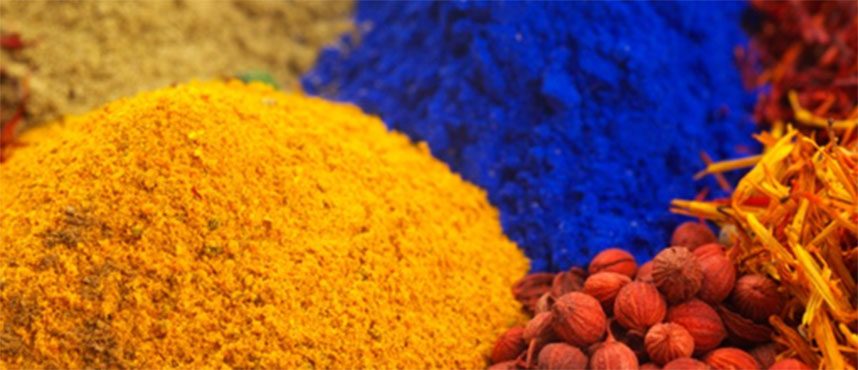Limitation on use natural v/s synthetic colours
Ever since its inception, the world has seen colours in all its forms. From fabrics and painting, to make-up and medicine, colours have been evidently present. The use of berries, barks, wood, lichen- literally anything that could impart colour has, for good reasons, changed with evolving times.
Natural Pigments:
On studying natural pigments, one understands their limited solubility, which affects their ability to colour uniformly. Due to its small pigment concentrations, the quantity of natural dyes required for every batch is more. Since these dyes are naturally sourced from plants, vegetables, invertebrates, etc., they possess natural edible oil, that has the potential to react chemically with other ingredients and lead to pigmentation or discolouration. The fragility of their composition is easily affected by oxidation, light, sun exposure, pH, etc. Thus, the resulting shelf life of cosmetics and food products also becomes limited, and is usually lesser as compared to those with synthetic dyes.
Using natural dyes in your products comes at a cost that’s not just financial.
Often, the results are different in each batch production. Maintaining uniformity and stability of these dyes requires addition of protective agents that has adverse effects on the pigments quality and properties.
Takeaway:
Natural pigments have –
- Limited solubility
- Smaller pigment concentrations
- Potential chemical reactivity
- Fragile composition
- Reduced shelf life
- Poor stability
Intervention of Synthetic Dyes:
The accidental discovery of a brilliant purple colour called “MAUVE” by William Henry Perkins, led to a revolution in the colour industry. Eventually, the discovery led to more and more research of coal tar derivatives which led to the intervention of synthetic dyes. Now these dyes addressed the above concerns of natural dyes. It was through synthetic dyes that uniform, good quality, and safe products at an affordable cost came into the picture.
Synthetic food colours, with their superior chemical composition offer value in terms of cost, uniformity, extensive applicability, and durability across multifarious product range. They are authorized and regulated for use in food additives in many countries (Ministry of Health, Labour and Welfare, 1947; European Council, 1994; U.S. Food and Drug Administration, 2004) under strict FDA laws and regulations.
Takeaway:
Synthetic pigments provide –
- Limited solubility
- Smaller pigment concentrations
- Potential chemical reactivity
- Fragile composition
- Reduced shelf life
- Poor stability
Concluding…
With decades of experience, Neelikon has a crisp understanding of the market. As a responsible manufacturer, Neelikon believes in taking care of the product quality, and the quality of life of its stakeholders. Thus, the entire product range of Neelikon- natural and synthetic is certified as per the European Commission and meets appropriate demands of legislative authorities like USFDA, JECFA/CODEX.
In the end of this debate, after all, it’s the colours that win!
* Kindly check for references as mentioned at the footnote.
Although based on our general experience, the information presented herein is believed to be reliable, Neelikon makes no representation or guarantee as to the accuracy, completeness or reliability of the information. Due to various factors that are outside our control, we cannot accept liability from reliance on this information under any circumstances.
Source: https://en.wikipedia.org/wiki/Food_coloring#Natural_food_dyes
Ministry of Health, Labour and Welfare, 1947; European Council, 1994; U.S. Food and Drug Administration, 2004


